Balancing Hex Nut Challenge
It’s possible that you have such great eye-hand coordination and rock-steady nerves that stacking five hex nuts on the rim of a glass is how […]
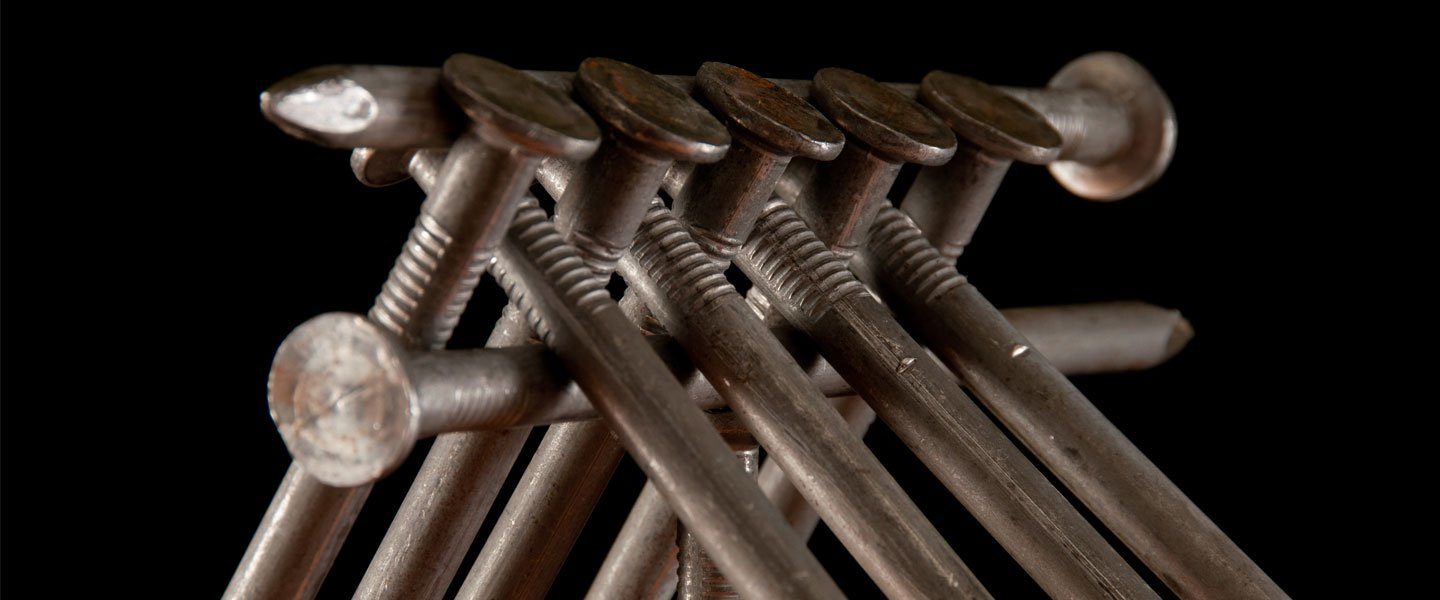
The object is to balance a bunch of nails on the head of a single nail. All of the nails have to be balanced at the same time and cannot touch anything but the top of the nail that is stuck in the base. Are you up to the challenge?
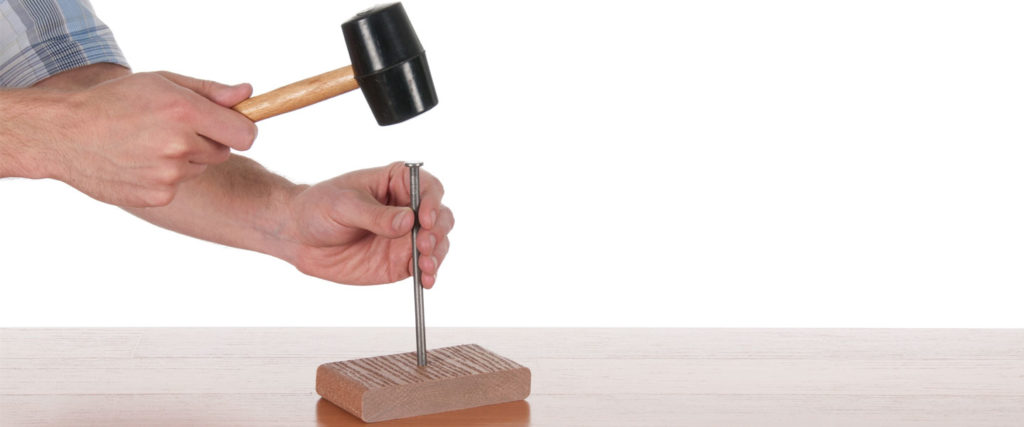
Hammer one of the nails into the center of the block of wood. It’s a good idea to measure and predrill the hole to avoid splitting the wooden block. It’s important that this nail be standing as straight as possible.
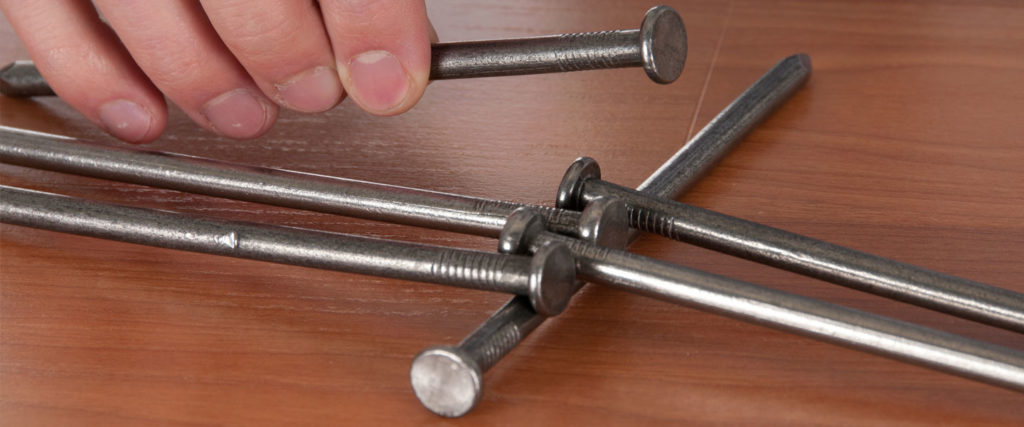
Place the wood block flat on a desk or table. The challenge is to balance all of the nails on the standing nail in the wooden block. To win the challenge, none of the 11 nails may touch the wood block, the desk or table, or anything else that might help hold them up. No additional equipment other than the wood block and the nails may be used.
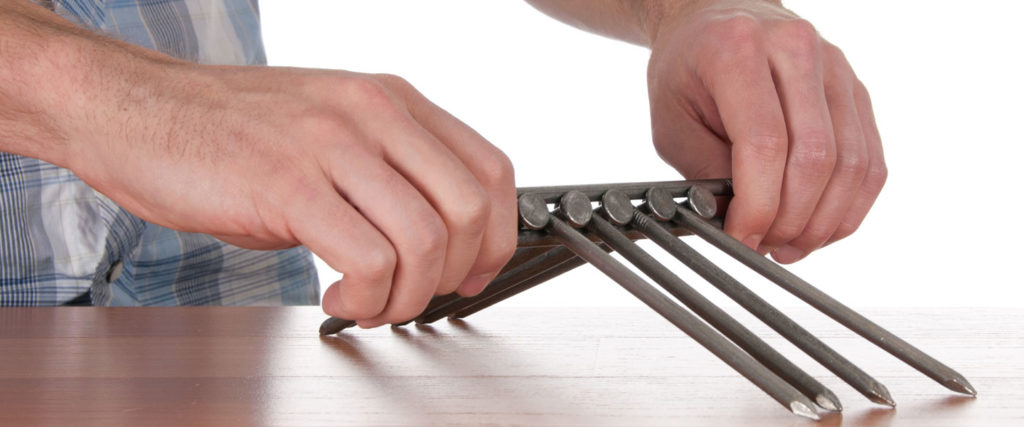
Need help? The trick to balancing the nails has to do with their center of gravity or balancing point. Lay one nail on a flat surface and place the other nails across this nail, head to head as shown in the photograph on the following page. Finally, place another nail on top of this assembly, head to tail with the second nail.
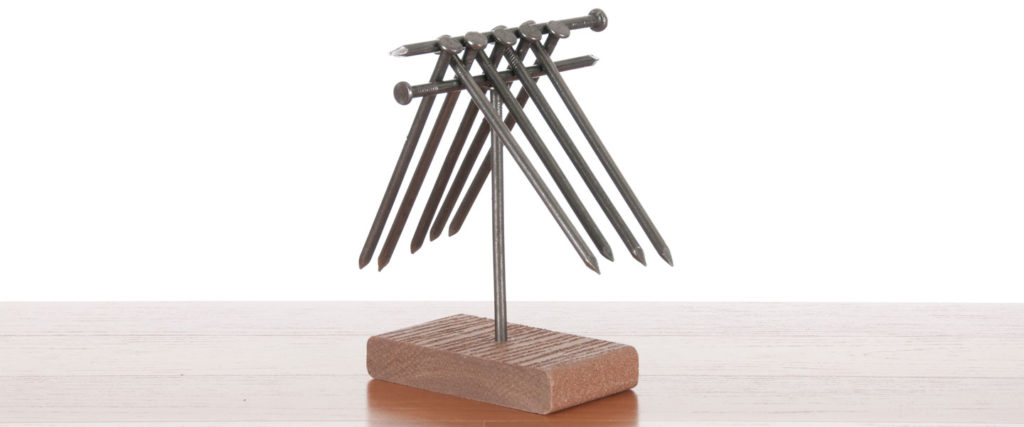
Carefully pick up the assembly and balance it on the upright nail. Voilà!
Gravity pulls any object toward the center of the Earth as if all of its weight were concentrated at one point. That point is called the center of gravity. Objects fall over when their center of gravity is not supported. For symmetrical objects like a ball or a meter stick, the center of gravity is exactly in the middle of the object. For objects that are not symmetrical, like a baseball bat, the center of gravity is closer to the heavier end.
The stability of the nails depends on their center of gravity being right at or directly below the point where they rest on the bottom nail. Add too many nails to the left or right and they become unstable and fall off.
This “scientific” puzzle is trickier than it looks. The best way to solve it is to think of an idea and then try it out. Even if it doesn’t work, you might think of another idea at the same time. The key is to not get frustrated and give up. Keep trying. You might even have to sleep on an idea and come back to it the next day. You may want to share your ideas with others to see if they have a different approach to solving the problem. This problem-solving process is exactly like the scientific method—ask a question, run some tests, ask another question, run some more tests, and eventually come to a conclusion. If your experiment or “solution” doesn’t work, that’s okay. Some of the greatest scientific discoveries have been made by mistake!
Slowly remove one nail at a time. How many nails can you remove before the system collapses? Which nails are necessary for the system to remain in balance?
If you’re really ambitious, you can try your luck at our large-scale version using landscape nails (often called “spikes”) and a friend as the base. Have a friend hold one of the large nails while you attempt to balance the other 11 nails on the head of the single nail. Here’s a bit of advice—start with the small-scale version and work your way up.
[memberful_download_link download=’7292-balancing-nails-guide’]Download file[/memberful_download_link]